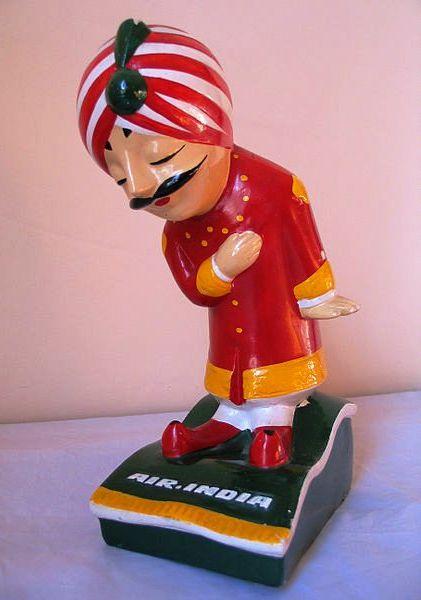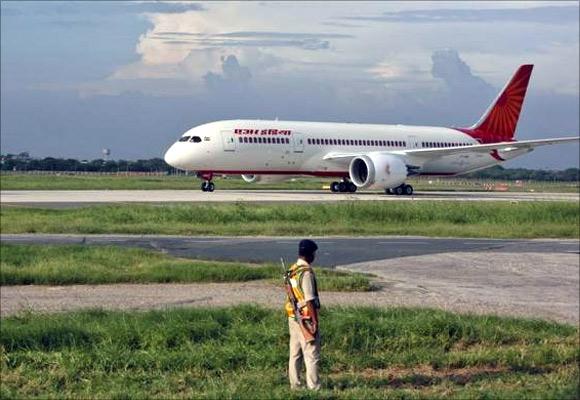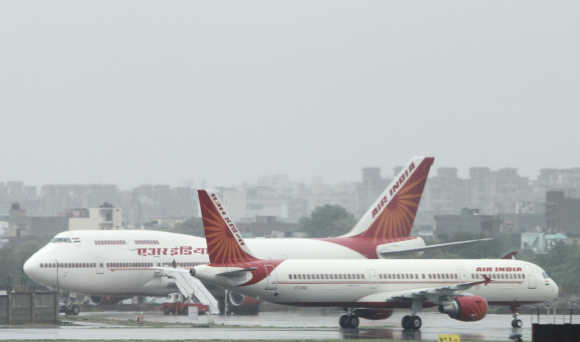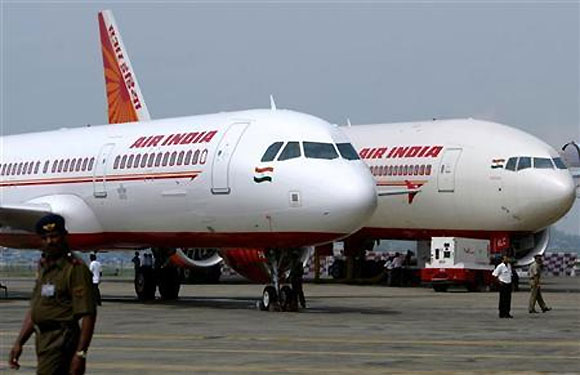
Cracks began to show from the 1980s. Years of political interference and aggressive unionisation led to decisions that deterred the airline’s growth.
INCEPTION: Air India began in 1932, as Tata Airlines, a division of the then-Tata Sons. J R D Tata flew from Karachi to Bombay to flag off the service.
In 1946, it was renamed Air India Limited after commercial services were resumed post-World War II.
In 1948, it flew the first of many international routes, between Bombay and London, via Cairo and Geneva, using Lockheed Constellation turbo prop planes.
The airline was nationalised in 1953 with J R D Tata, the airline’s founder, as its chairman.
. . .

THEN AND NOW: Air India’s famous mascot, the Maharajah, was unveiled in 1946. “Then India was known as the land of maharajas and Air India was its only international carrier,” recalls the airline’s ex-director Jitender Bhargava.
It catered to the elite and foreign tourists visiting India. Air India International flew to destinations such as Cairo, Prague, Damascus, Zurich and Istanbul.
“There was no concept of a daily flight, except on routes like London. Most routes were serviced twice a week.
“It was more about providing connectivity than convenience,” Bhargava says.
Air India acquired its first Boeing 707 in 1960 and by 1962 it had become the first airline with an all-jet fleet after phasing out its Constellation planes.
. . .

Tata continued as a chairman of Air India till 1978.
Capt D Bose, its MD in 1984-87, remembers that it had a high standard of punctuality and stood out for personalised service.
Captain S D Mathur, Air India’s MD in 1994-95 and chairman of J R D Tata Memorial Trust says, “Under Mr Tata, the airline was professionally run.
“He took a keen interest in operations and would follow up to check whether his observations and remarks made on his travels were acted upon.”
But cracks began to show from the 1980s. Years of political interference and aggressive unionisation led to decisions that deterred the airline’s growth.
Unviable, politically-driven routes, strikes, high staff salaries despite low productivity, all led to the airline multiplying its losses.
The advent of foreign and private Indian players led to a sharp decline in its market share. It has about 20 per cent share in domestic and 12 per cent in international business.
. . .

NAMES BEHIND THE BRAND: J R D Tata, founder and former chairman of Air India, Nevill Vintcent (who completed the first flight of Tata Airlines and consulted on routes), Bobby Kooka, Air India’s commercial director and Umesh Rao, an artist with J Walter Thompson (now JWT), both of who created the Maharajah.
REINVENTED? In 2007, there was a cosmetic makeover of its look, with new wardrobes for both the Maharajah and the stewardesses.
But financial revival is key.
Air India is still in the process, reducing its losses from Rs 7559 crore to Rs 5198 crore.
Passenger volumes and revenue have increased and it has secured a debt-restructuring package.
Its load factors and punctuality have improved.
The column, 50&Counting, will chronicle brands which have survived for 50 years and more in India.
We decipher their good times and bad times.